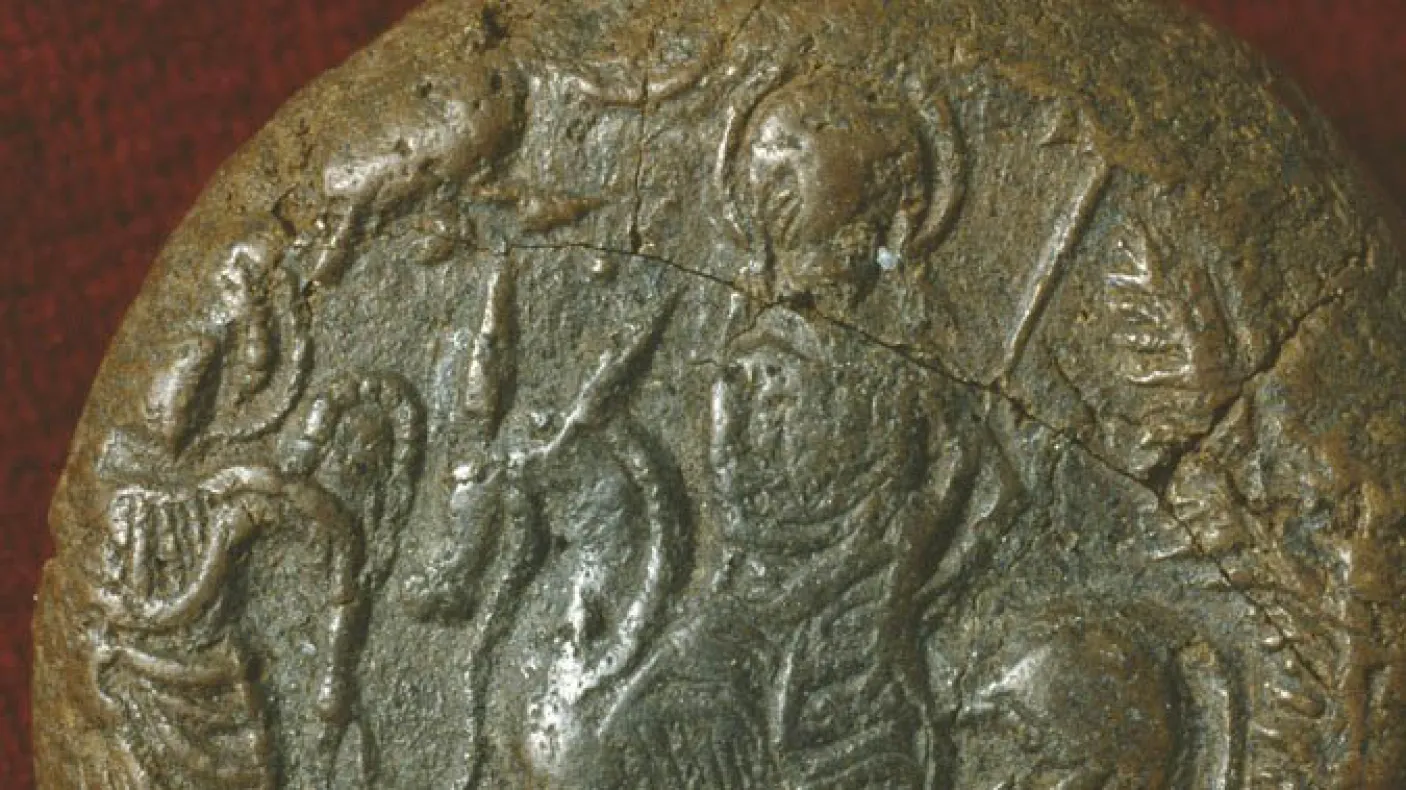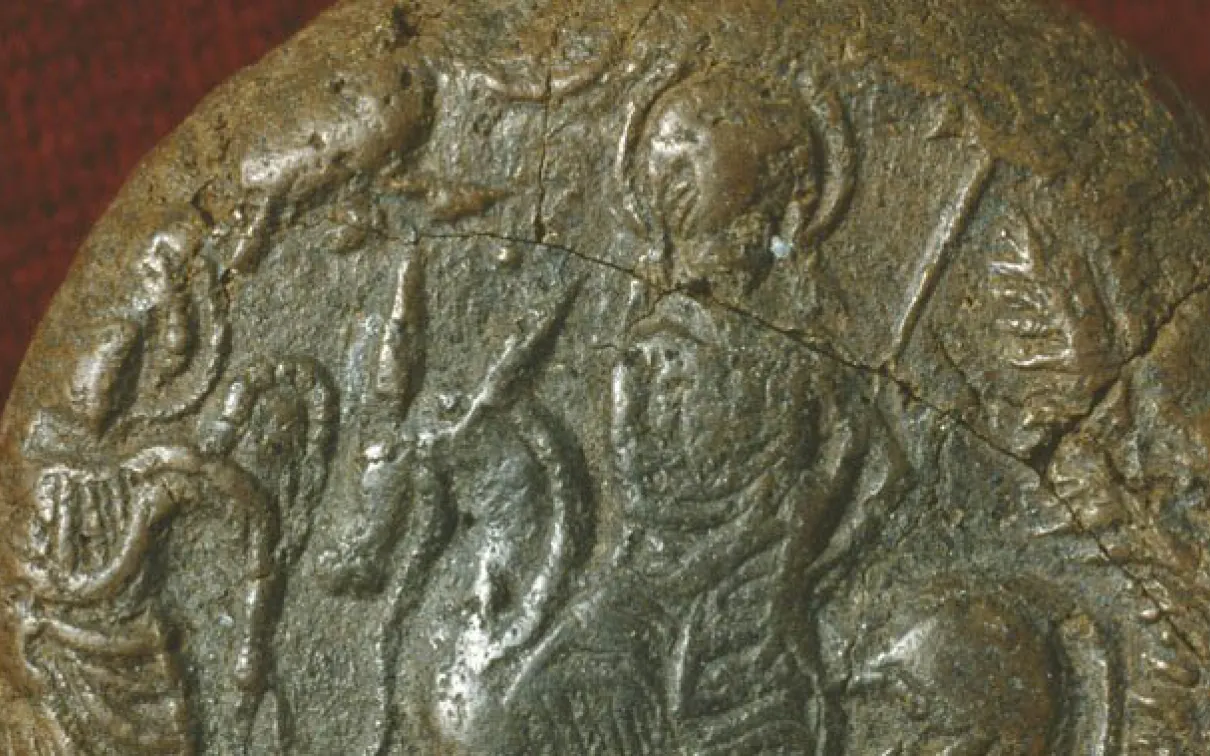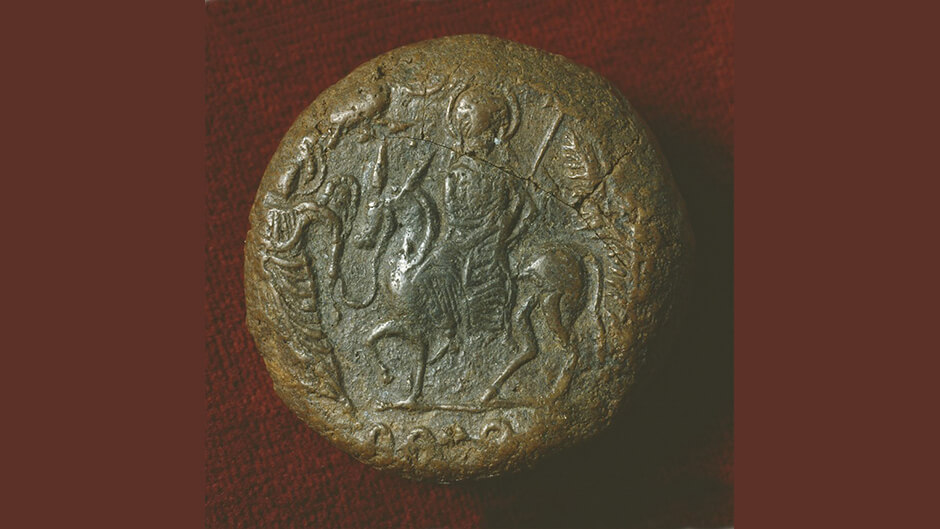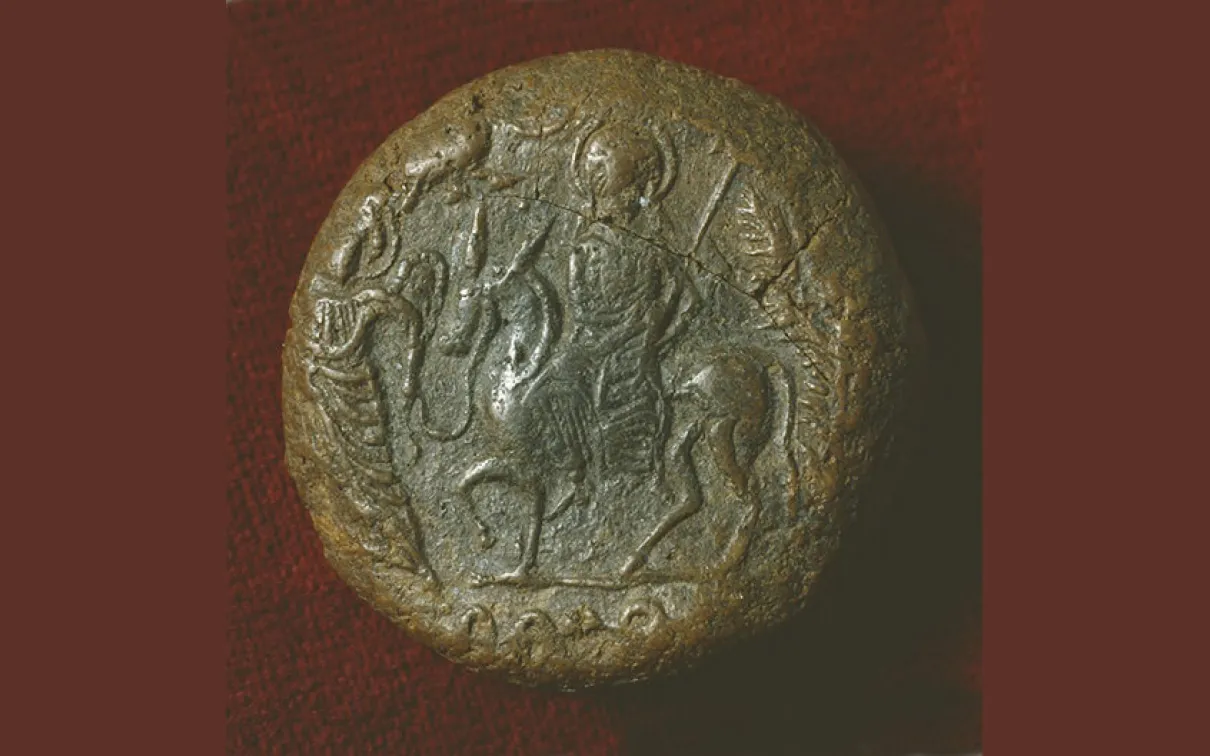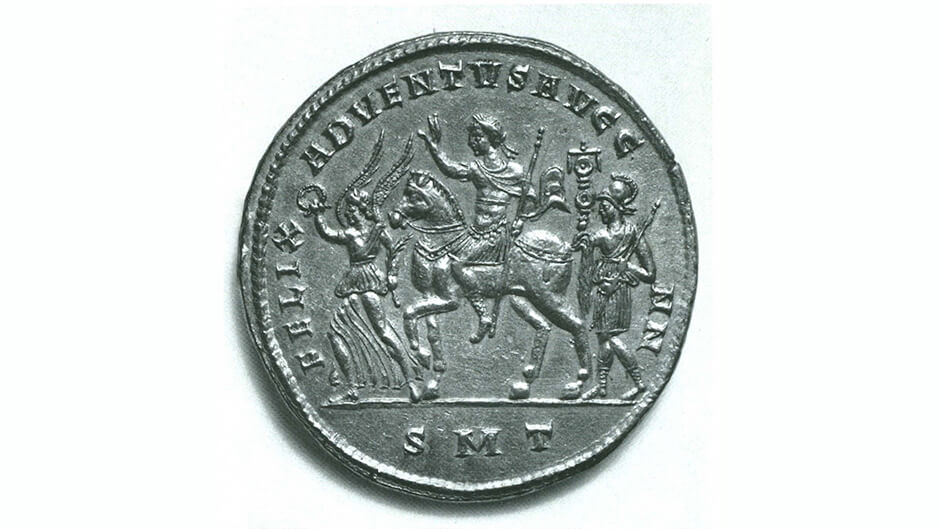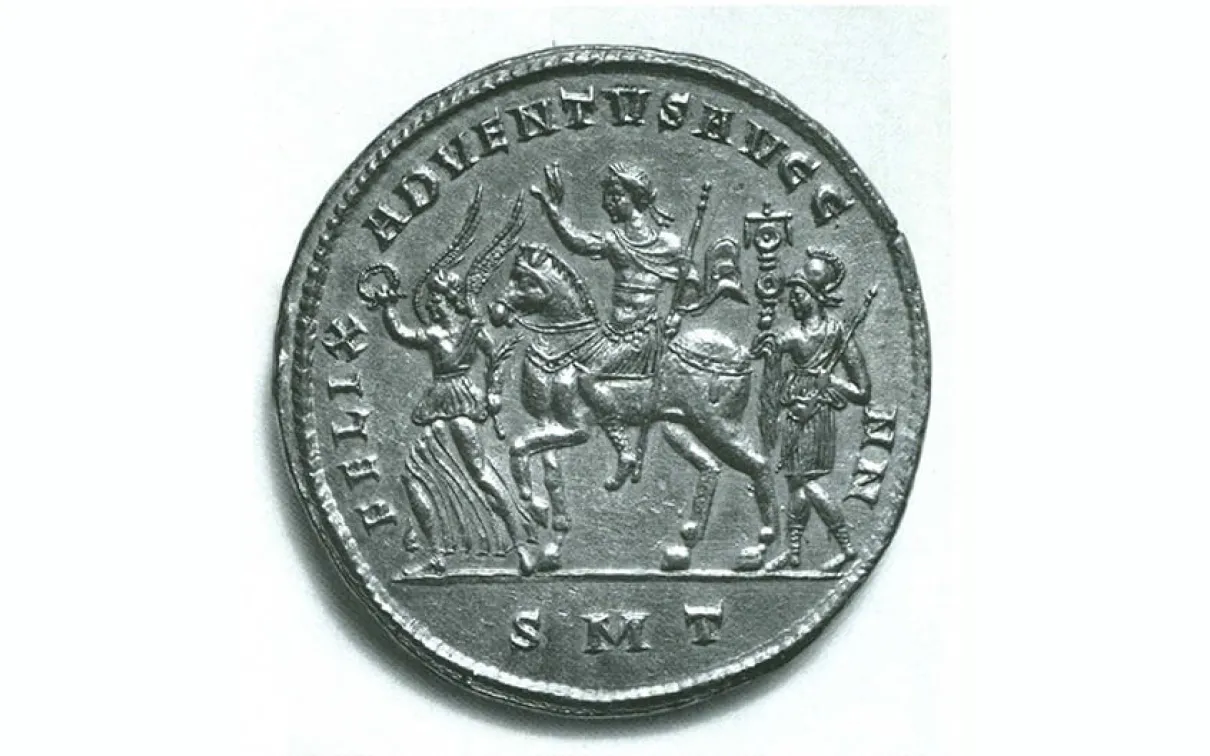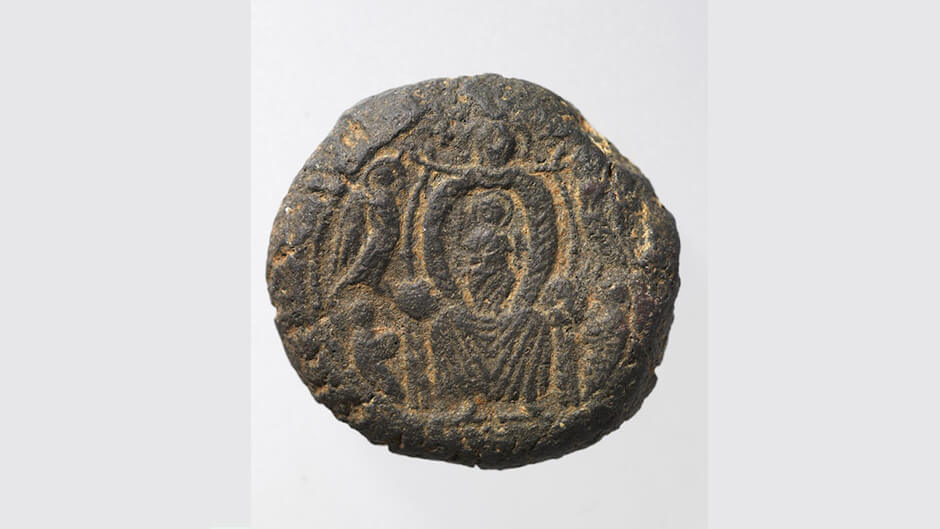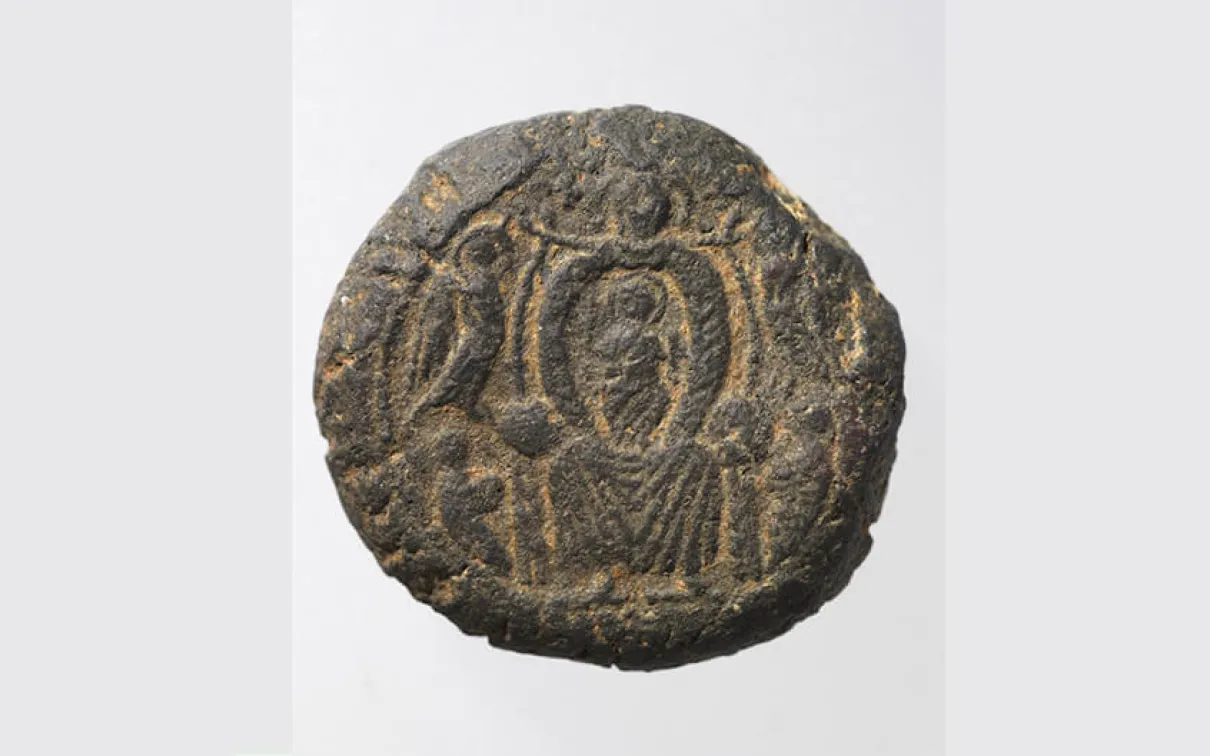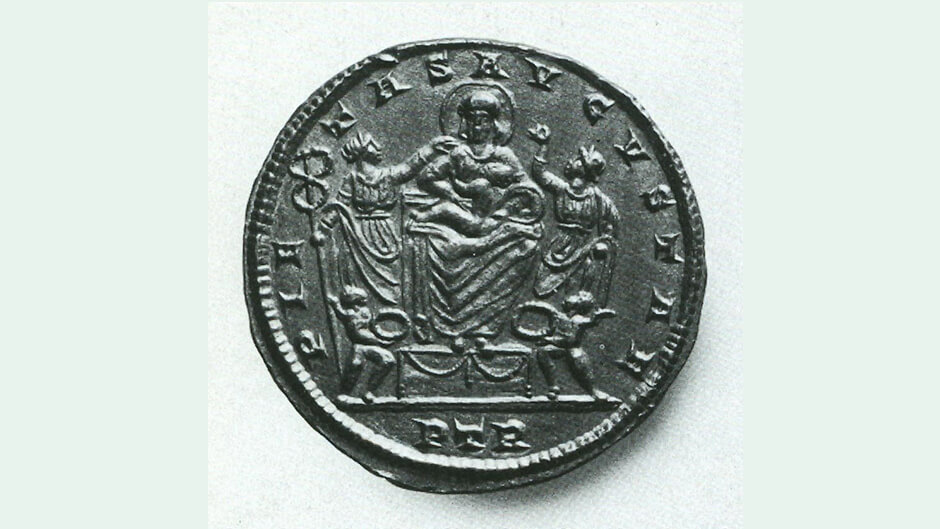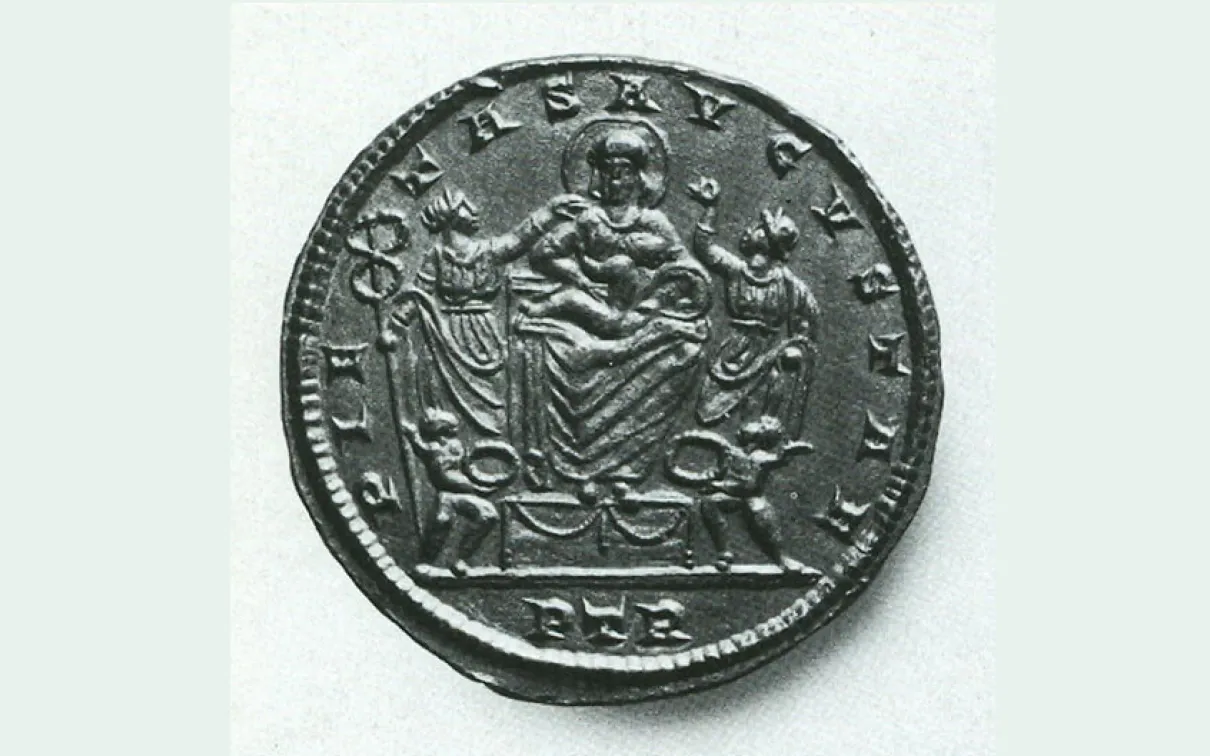Portable Bits of Divine Energy
Categories
About
Pilgrim tokens or “portable bits of divine energy” were made from the sanctified earth found at pilgrimage sites and stamped with sacred images. They were valued for their power to avert evil and cure an ailment when consumed or when mashed with a liquid and applied to an afflicted area of the body. At other times, when religious travelers were sailing home after visiting a holy site and encountered a storm, pilgrim tokens were thrown into the sea to calm the tempest.
Although the tokens were simple to make, mass-produced and modest in style some of them were stamped with erudite images that adopted iconography used by the Roman Emperors. The ROM owns two examples and both are on display in the Joey and Toby Tanenbaum Gallery of Byzantium.
The first token shows Christ’s Entry into Jerusalem, dating to about AD 500-600 (Figure 1). A haloed Christ rides a donkey side-saddle and holds a cross-staff. An angel with halo leads the donkey with a rein, a dove flies above holding a wreath with its beak and behind Christ are bunches of palm branches. A row of circles, each with a horizontal line (looking like the Greek letter theta), runs below the ground line.
Observed on Palm Sunday, Christ’s Entry into Jerusalem announced the beginning of his Passion and proclaimed his triumph over death. Since the 4th century, depictions of the Christ’s Entry appropriated the iconography of the Roman Imperial Adventus (Figure 2).
The Advenus was a ceremony enacted by a city’s populace and dignitaries to greet the arrival of an Emperor. The ceremony emphasized the bond between the welcoming people and the arriving Emperor. On the gold medallion, the reverse shows the Emperor Constantine I (reigned AD 306-337) holding an imperial scepter and riding a horse that is preceded by a Victory and followed by a soldier holding a standard and a spear. This medallion, issued in 313, likely celebrates Constantine’s entry into Milan for his meeting with the co-Emperor Licinius. The outcome was the Edict of Milan which granted freedom of worship to all Christians of the Empire.
On the token, Christ holding a cross-staff replaces the emperor, the Roman Victory is now a Christian angel and the Roman soldier is omitted and replaced by a bunch of palm branches. Here, Christ is welcomed into Jerusalem by his followers as the divine emperor of heaven and earth, who will defeat death and sin. Even the row of circles below the ground line mimics mint marks, such as the SMT in exergue on the gold medallion
A second token, dating to about AD 500-600, depicts a frontal, nimbate Mary seated on a cushioned, lyre-backed throne with a frontal and full-length Christ child standing on her knees (Figure 3). Christ is blessing with his right hand and holds a scroll in his left. An angel hovering on either side of the throne hail the new born saviour and below them on each side, a kneeling supplicant worships the mother and her child.
This composition bears a close similarity to the reverse side of a gold medallion of the Empress Fausta, wife of the emperor Constantine I, issued around AD 324 (Figure 4). Fausta, nimbate sits frontally on a throne and holds an infant in her lap. She and the infant are honoured by two personifications, Felitas, standing on the left and holding a caduceus, and by Pietas standing on the right. At her feet, below the throne, a pair of genii offers the Empress and the newly born child a wreath. The medallion was probably minted to commemorate the birth of the Constans, a future Emperor (reigned AD 337-350).
With the token, Mary the mother of God and the Christ child replace Fausta, the mother of the Emperor and the infant Constans. The two pagan personifications and the genii become Christian angels and praying supplicants. Several messages are conveyed by the token. The image not only acclaims Christ’s birth from Mary but according to Nancy Sevcenko the frontal, youthful Christ blessing and holding a scroll represents Christ Emmanuel, the preexistent logos, the incarnate word and the flesh immortal. The gold medallion commemorates the birth of the future Emperor while the token announces the birth of God.
The tokens give pictorial expression to the divinity of Christ and Mary and at the same time demonstrate the continuation of the Classical tradition exemplified by the Adventus/Entry into Jerusalem and the Birth of the Emperor/Birth of God scenes. The images on the two tokens were likely inspired by well know works of art perhaps from the Holy Land or Constantinople.
